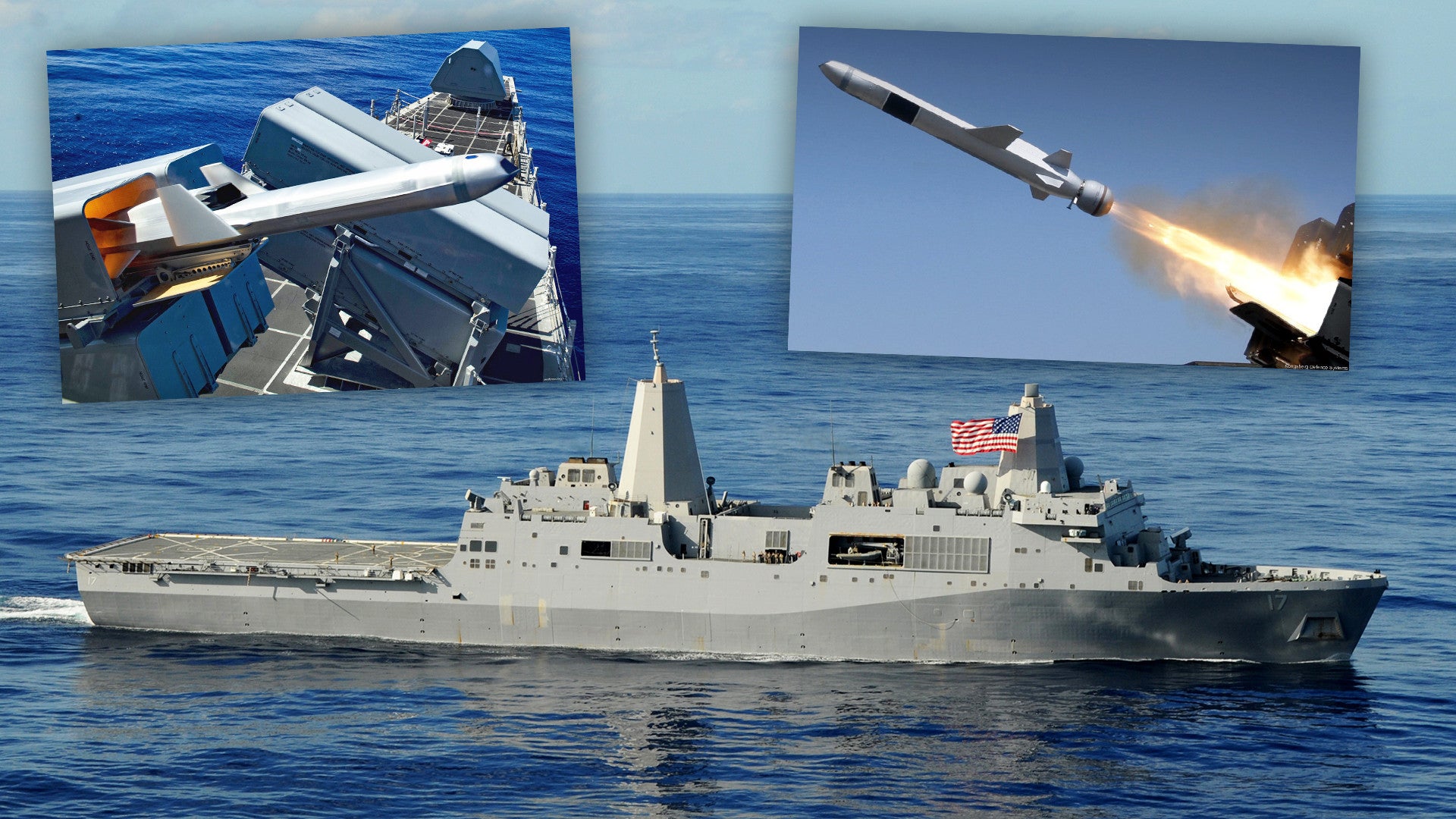The U.S. Navy is looking to integrate the new Naval Strike Missile onto at least one amphibious warfare ship in the coming year. This is part of a larger effort to look at ways to increase the firepower of these types of vessels, which could eventually include the addition of containerized missile launchers.
U.S. Marine Corps Major General Tracy King, the head of the Expeditionary Warfare division within the Office of the Chief of Naval Operations, gave reporters details about these plans on Jan. 8. 2021. The Navy first announced it would acquire the Norwegian-designed Naval Strike Missile (NSM), which the U.S. military has now also designated the RGM-184, in 2018. The immediate plan, since then, has been to integrate those missiles onto both subclasses of the service’s Littoral Combat Ships (LCS), though that process has been moving slowly, as you can read about in this previous War Zone piece. The NSM is also set to be part of the arsenal on the future Constellation class guided missile frigates.
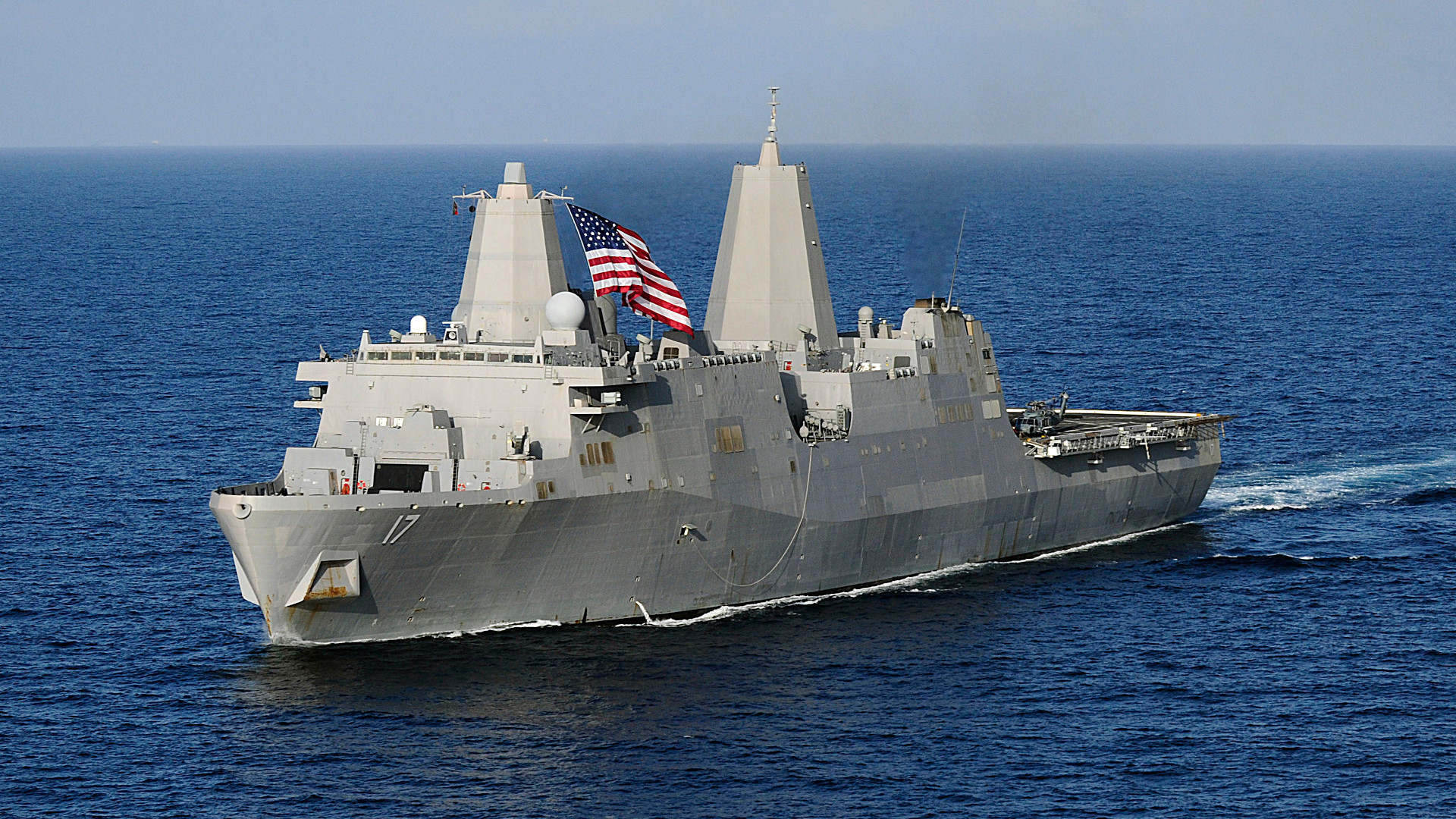
“We have these magnificent 600-foot-long, highly survivable … LPD 17s,” King said. “I suspect what you will see in the next year that we will probably test-fire a system off of an L-class ship and let the fleet play around with it, build up the doctrine on how we will use it and to confirm or deny whether it is worth the expense, which we think it is. We need the operators to confirm that.”
LPD 17 is the hull number of the first San Antonio class landing platform dock, one of the Navy’s most modern amphibious warfare ship designs. Examples of a Flight II San Antonio design, which are slightly smaller and have reduced capabilities compared to the first generation ships, are also now under construction to eventually replace the service’s Whidbey Island class and Harpers Ferry class dock landing ships. The Navy collectively refers to all of its amphibious warfare ships, the classification codes for which all begin with the letter L for “landing,” such as LPD, as “L-class” ships.
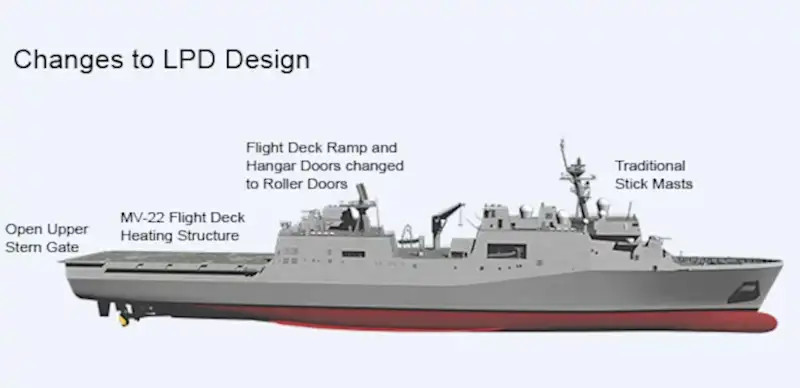
“The LPDs need the ability to reach out and defend themselves and sink another ship,” Major General King explained. “It’s not from the aspect of using them as a strike platform; it will drastically increase their survivability if the enemy has to honor that threat.”
The NSM is a stealthy, subsonic, sea-skimming cruise missile with a range of around 100 miles that Kongsberg developed primarily to engage other ships. The weapon uses a GPS-assisted International Navigation System (INS) guidance package, together with terrain recognition, to get to the general target area. After this, it switches over to an imaging infrared seeker that finds the target using an internal database of information about representative ship types. This gives the missile added accuracy and allows it to more effectively discriminate between the vessel it was fired at and other objects, such as decoys. It also makes it less vulnerable to electronic warfare jamming and other countermeasures. You can read more about the NSM in these past War Zone pieces.

Adding these missiles to the San Antonios, as well as other existing or future amphibious warfare, together with any necessary additional fire control architecture, could definitely give them an immediate ability to defend themselves against other naval threats. The San Antonio class ships already have a capable AN/SPQ-9B surface search and fire control radar and could employ helicopters, such as the MH-60R Seahawk, for over-the-horizon targeting.
The Navy is already invested heavily in efforts to network all of its ships, submarines, and aircraft together through various efforts, as well, such as Cooperative Engagement Capability (CEC) and Naval Integrated Fire Control-Counter Air (NIFC-CA). These networks could also eventually tie into those that other services are working on, which could allow for targeting information to come from various offboard sources.
In addition, the San Antonio
design was originally supposed to have two eight-cell Mk 41 Vertical Launch System Arrays (VLS). The planned concept of operations for those San Antonios was to have been to load each of the 16 VLS cells with a quad-pack of RIM-162 Evolved Sea Sparrow Missiles (ESSM) surface-to-air missiles, but they could have accommodated other weapons, as well. Today, these ships are armed with two Rolling Airframe Missile (RAM) launchers, as well as a pair of turreted 30mm automatic cannons, for close-in defense.

There have been numerous discussions in the past, including here at The War Zone, about possibly installing Mk 41s or other weapon systems on the San Antonios in the end. The Navy is in process of testing a laser directed energy weapon, known as the Laser Weapon System Demonstrator (LWSD) Mk 2 Mod 0, on the San Antonio class USS Portland, an installation that leverages some of the space leftover from the omission of the Mk 41s.

Depending on its exact design, a containerized missile launching system of some kind could provide the Navy with added flexibility, allowing the service to more readily install and remove launchers from ships, as necessary. A launcher capable of firing more than just NSMs, or that has some kind of modular design that could be more easily adapted to launch other weapons in the future, could offer other additional capabilities for L-class ships or other naval vessels with sufficient space. The NSM itself has an inherent land-attack capability, in addition to its primary function as an anti-ship weapon. This could be valuable for knocking out enemy defenses on the shore or targets immediately inland during amphibious operations.
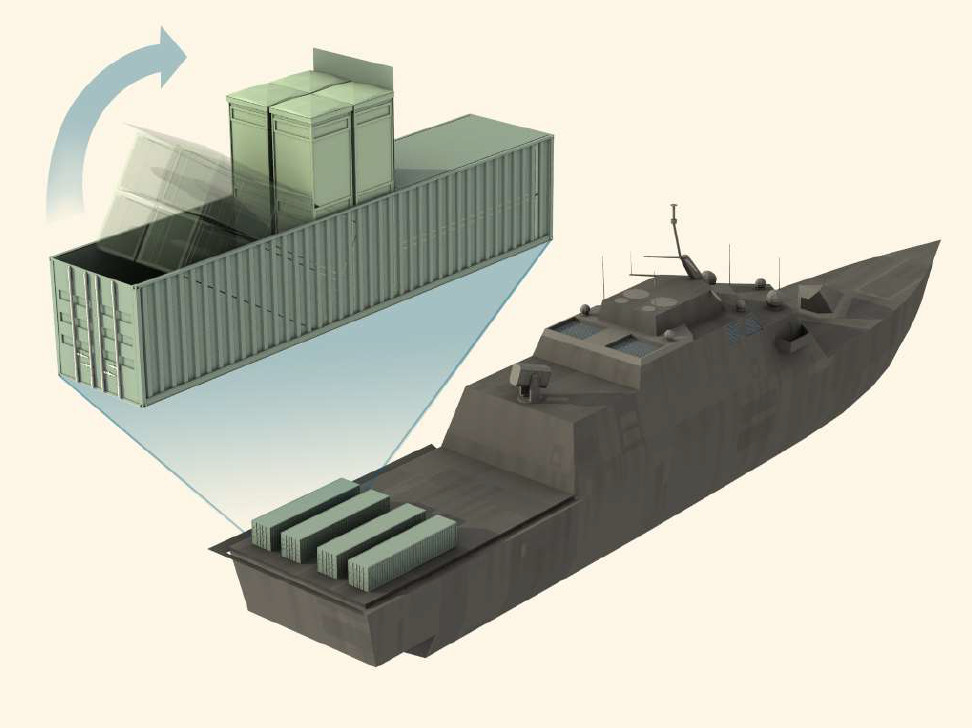
These seem to be among the exact questions Major General King is hoping to start answering in the coming year. “My prediction is that we will have one [L-class ship equipped with NSM] within the next 12 months,” he said. “We will let the fleet play around with it probably a year or so and then decide how we’re going to field it.”
This is not the first time the Navy has explored potential ways to rapidly integrated NSMs onto ships, either. As part of testing leading up to the initial acquisition of these missiles for the LCSs, the service fired some of these weapons from a launcher lashed to the helipad on the Independence class LCS USS Coronado. That arrangement notably included the flatrack assembly from the truck-mounted launcher that is part of the ground-launched NSM system that Kongsberg markets for coastal defense.

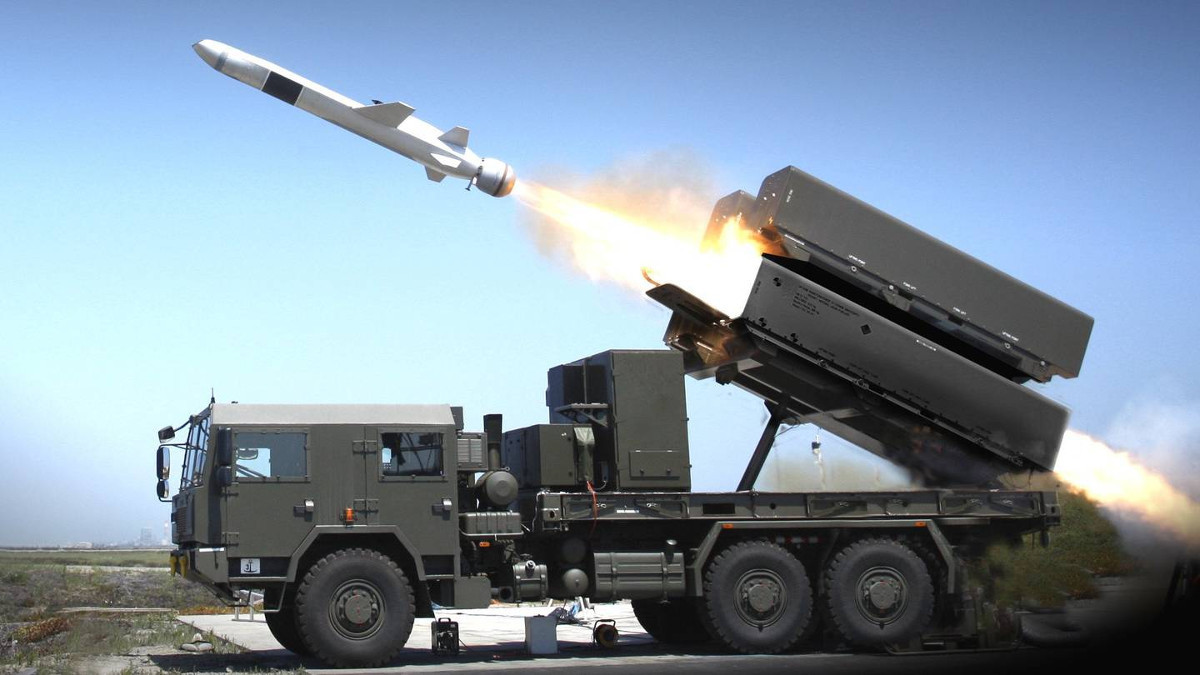
The Marine Corps has also already test-fired the High Mobility Rocket Artillery System (HIMARS) from the deck of a San Antonio class ship in the past and is now looking to adapt the truck-mounted HIMARS launcher to fire the NSM. As such, Major General King raised the possibility that perhaps L-class ships might simply use embarked Marine missile units in the future, rather than actually gaining their own new launchers. As part of its dramatic force structure reorganization, which you can read more about in this previous War Zone story, the Marine Corps is looking to acquire an array of new long-range strike weapons, including ground-launched NSMs and Tomahawks, with a particular focus on taking out hostile ships. The U.S. Army is also now exploring ground-based Tomahawks, as well as a ground-launched version of the Navy’s very capable SM-6 missile.

“When we jump on aboard a ship, that [weapon system] becomes available to the ship’s captain,” King explained. “So maybe we don’t need to install launchers and NSMs.”
“I am a little bit dismissive of that complaint because the ship’s got to get there first,” he added, in response to a question about whether this concept of operations would then leave Marine units without any missiles to fire after arriving at their destination. “So, I think you’re going to see us deploying containerized weapon systems that we can use wherever we want to use them.”
Major General King also addressed the separate issue about concerns about the general delivery schedule of NSMs to the Navy. At least as of last summer, Raytheon had yet to establish robust U.S.-based manufacturing and supply chains as planned.
“My intent is to ensure that my desire to increase lethality of LPDs doesn’t interfere with [Director of Surface Warfare Rear Admiral Paul] Schlise’s efforts to increase lethality on LCSs,” King said. “It’s a legitimate concern [about] putting these very rare systems on an L-class ship instead of another kind of warship.”
Regardless, increasing the firepower of ships such as the San Antonios seems to be a growing priority for the Navy. In recent years, the Navy has become increasingly concerned about the survivability of amphibious warfare ships, as well as support ships, in a future high-end conflict, especially in the broad expanses of the Pacific.

The Navy has declared that China, which is dramatically expanding its naval capabilities, as well as developing and fielding ever-more capable anti-ship ballistic and cruise missiles that can be fired from sea, air, and land-based platforms, “our most press long-term strategic threat.” This is a view shared by the Marine Corps and Coast Guard, which last year collectively issued a first-of-its-kind integrated maritime security strategy.
Russia, as well as smaller countries, such as North Korea and Iran, continue to make advances that also present increasing challenges for amphibious warfare and other types of naval operations. This has already prompted the Navy and Marine Corps to begin exploring entirely new distributed warfare concepts for amphibious operations that reduce the dependence on large L-class ships, something you read about more in this past War Zone piece.
Test firing an NSM from an amphibious warfare ship later this year would be an important step toward giving those ships additional tools to protect themselves against naval threats, as well as potentially engage other targets at sea or on land.
Contact the author: joe@thedrive.com
